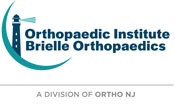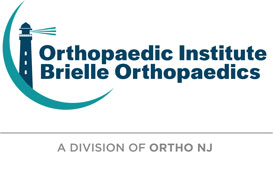![]()
Are you ready for a hip replacement?
Discover new, game-changing technologies that can help you start living your full life again.
Rediscover
Your Go.
![]()

Official joint replacement technology of the Pro Football Hall of Fame.
The Ultimate Hip
Replacement Experience
See how hip replacement has changed—and what it can do for you.

An implant built to last4,5,6
With Smith+Nephew hip implants, your surgeon has access to OXINIUM◊ Oxidized Zirconium. This unique metal alloy is designed to reduce the effects of implant wear and tear. In fact, OXINIUM hip implants have been lab-tested for durability 9-times longer than the international standard for joint replacements7.

Proven Success
R3 is the primary cup used by Smith & Nephew surgeons globally. With over a decade of clinical heritage, it has been used in major markets all over the world and has been implanted in more than one million cases since its launch. In addition, it has reported results in all major orthopaedic registries, making it a trusted technology platform with proven success.

Decades of experience
Since the 1960s, we have been dedicated to making the most innovative knee implants in the world. Building on our heritage of pioneering knee designs and clinically proven knee systems, today’s knee implants from Smith+Nephew are designed to meet the demands of today’s active patients and get them back to living lives unlimited by knee pain.
The Ultimate Robotics-Assisted Hip
Replacement Experience
See how hip replacement has changed—and what it can do for you.

An implant built to last4,5,6
With Smith+Nephew hip implants, your surgeon has access to OXINIUM◊ Oxidized Zirconium. This unique metal alloy is designed to reduce the effects of implant wear and tear. In fact, OXINIUM hip implants have been lab-tested for durability 9-times longer than the international standard for joint replacements7.

Proven Success
R3 is the primary cup used by Smith & Nephew surgeons globally. With over a decade of clinical heritage, it has been used in major markets all over the world and has been implanted in more than one million cases since its launch. In addition, it has reported results in all major orthopaedic registries, making it a trusted technology platform with proven success.

Sleep in your own bed
Did you know that knee replacement surgery can be an outpatient procedure? You can have surgery in the morning and be sleeping in your own bed that same night—with the same Smith+Nephew implants and technologies available in the traditional hospital setting.
The Ultimate Hip Replacement Experience
See how hip replacement has changed—and what it can do for you.
Outcomes that out-perform
One of the most exciting hip replacement options on the market today is the POLAR3◊ Total Hip Solution. Although we call it a single solution, it is actually made up of three proprietary technologies that, when combined, can deliver extraordinary results that are designed to improve surgical outcomes and maximize patient satisfaction.

An implant built to last2,3,4
With Smith+Nephew hip implants, your surgeon has access to OXINIUM◊ Oxidized Zirconium. This unique metal alloy is designed to reduce the effects of implant wear and tear. In fact, OXINIUM hip implants have been lab-tested for durability 9-times longer than the international standard for joint replacements5.
Direct Anterior Hip
If you’ve been told you are a candidate for hip replacement surgery, you may benefit from a minimally invasive surgical technique called Direct Anterior hip replacement surgery. Put simply, this technique changes the direction from which a surgeon can access your hip joint.
The Ultimate Robotics-Assisted Knee
Replacement Experience
See how knee replacement has changed—and what it can do for you.
Designed for you
With 3D digital modeling from the CORI◊ Surgical System you get a surgical plan that’s customized to your unique anatomy. That means your surgeon can perform your procedure more efficiently and accurately than traditional knee replacement surgery.

Higher patient satisfaction—Smoother recovery4,5,6
The JOURNEY◊ II Knee System has been demonstrated to improve a patient’s range of motion more quickly after surgery. This faster recovery, along with the implant’s normal pattern of motion, have been shown to lead to high levels of patient satisfaction.

Proven Success
R3 is the primary cup used by Smith & Nephew surgeons globally. With over a decade of clinical heritage, it has been used in major markets all over the world and has been implanted in more than one million cases since its launch. In addition, it has reported results in all major orthopaedic registries, making it a trusted technology platform with proven success.

Sleep in your own bed
Did you know that knee replacement surgery can be an outpatient procedure? You can have surgery in the morning and be sleeping in your own bed that same night – with the same Smith+Nephew implants and technologies available in the traditional hospital setting.
Bringing advancements to the market
As part of the OrthoNJ network of New Jersey Orthopaedic Surgeons, OIBO harnesses the power to put patients first through the relentless pursuit of better orthopaedic care.
OIBO aims to create a center of orthopedic excellence in Central New Jersey through the application of innovation cutting-edge orthopaedic technology, through uncommon expertise, and through a genuine patient-over-profit approach.








 This minimally invasive technique allows for preservation of the soft tissue surrounding the joint, allowing for immediate stability following surgery, as well as a possible lower risk of dislocation, as the primary support muscles are left intact.
This minimally invasive technique allows for preservation of the soft tissue surrounding the joint, allowing for immediate stability following surgery, as well as a possible lower risk of dislocation, as the primary support muscles are left intact. Robotics-assisted Surgery
Robotics-assisted Surgery


